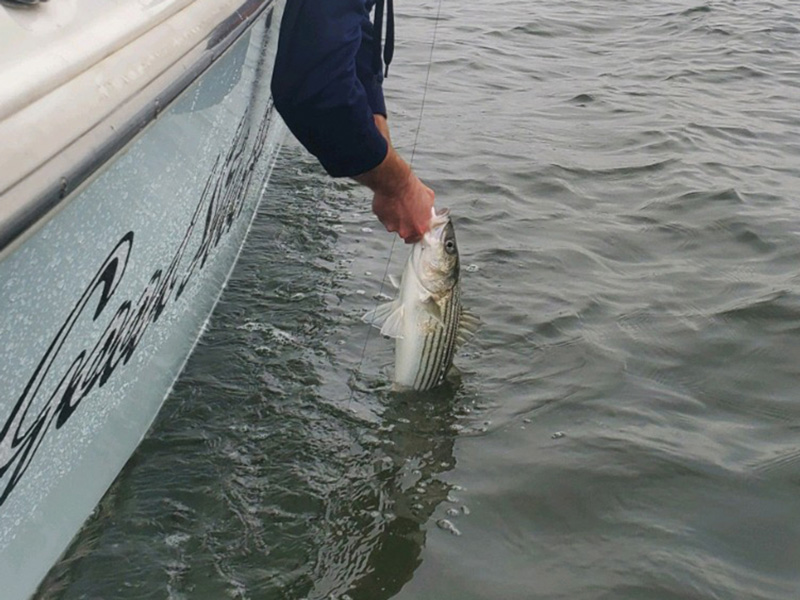Finally 2021 is here, and we can put that no good, very bad, awful year of 2020 and the Covid-19 mess it came with into the rearview as we hope for, work for, and dream for better years ahead. Honestly, it won’t be very hard to top last year in most respects. One which could prove challenging, however, is the Chesapeake Bay striped bass fishery.

The state of the rockfish is, of course, not exactly a new topic. But it is one that consistently comes up again and again among the anglers I speak with. In fact, I don’t believe a single week has gone by over the past year without someone asking me for my opinion on it, or giving me theirs. Here’s the thing: opinions are pretty much meaningless without facts to back them up. And despite the fact that striped bass are perpetually ranked at or near the top in popularity for recreational saltwater gamefish; that a shocking 97 percent of the fishery’s economic value comes from recreational angling; and that striped bass angling supports over 10,000 jobs and contributed 802 million to GDP in the state of Maryland alone (2016 figures), we’re using decades-old science that was never designed to figure out catch-and-release mortality to estimate said mortality.
Yes, we’re once again bringing up the dreaded Marine Recreational Information Program, MRIP, and its nine-percent release mortality rate. We’ve been begging the state and federal governments to do some modern science and figure out how many released fish really do die, but to no avail.
I said long ago in this column that if I really thought a fish died for (about) every 10 I threw back, I wouldn’t be able to live with myself. But it also occurred to me that I’d never really kept track of just how many fish I deep-hooked, or released in a state likely to result in the fish’s death. So this October I took a head-count. I fished 14 days (almost all partial and often just a couple of hours after work in the evening, with an average time per trip of 2.75 hours), all with jigs, and released a hair under 200 fish. Out of those, two fish were deep hooked fish that I’m sure didn’t survive. I’m no mathematician, but I think that works out to approximately one percent. Let’s say just for the sake of argument that I killed twice or even three times as many as I think — still a far cry from the nine-percent figure MRIP uses.
On the flip side of the coin, observations of the folks I had aboard included one angler who persistently grabbed fish around the belly and squeezed, another used a dry towel to grab the fish (but stopped doing so when informed that it harms the fish by wiping away its protective coat of slime), and a third who often ripped the hook free as quickly as possible without any apparent care or forethought. I’d guess that their release mortality figures would be higher. I’d also guess that some anglers would have lower release mortality than I would.
No, I’m not taking the myriad of other factors affecting catch and release mortality into account: water and air temperature, salinity, fishing style, etc. My aim is not to argue that my observations were scientific, nor that they’re even relevant to real-world release mortality figures. It’s simply to illustrate that we really don’t know how many of the fish we release will survive — all we can do is guess. Yet with a rather minimal investment, we could be managing this fishery with knowledge rather than guesswork. The technology now exists to do accurate catch and release mortality studies, which has been proven by modern acoustic telemetry tagging studies. We could do the same with rockfish for a paltry half-million dollars or so. Chesapeake Bay striper expert UMCES Regents Professor David Secor has confirmed this, saying “We have the right technology, it just hasn’t been a high enough priority.”
In a column early last year, we asked you anglers to help make this a priority by reaching out to Bruce Vogt, Ecosystems Manager at the NOAA Chesapeake Bay Office ([email protected], 200 Harry S. Truman Parkway, Suite 460, Annapolis, MD 21401, (410) 267-5660) and Max Appelman, Fishery Management Plan Coordinator ASMFC ([email protected], 1050 N. Highland St, Suite 200 A-N, Arlington, VA 22201, (703) 842-0740). We’re renewing that call now, in the first month of 2021. Let’s all demand this action and make 2021 a better year not just for us, but for the striped bass, too.